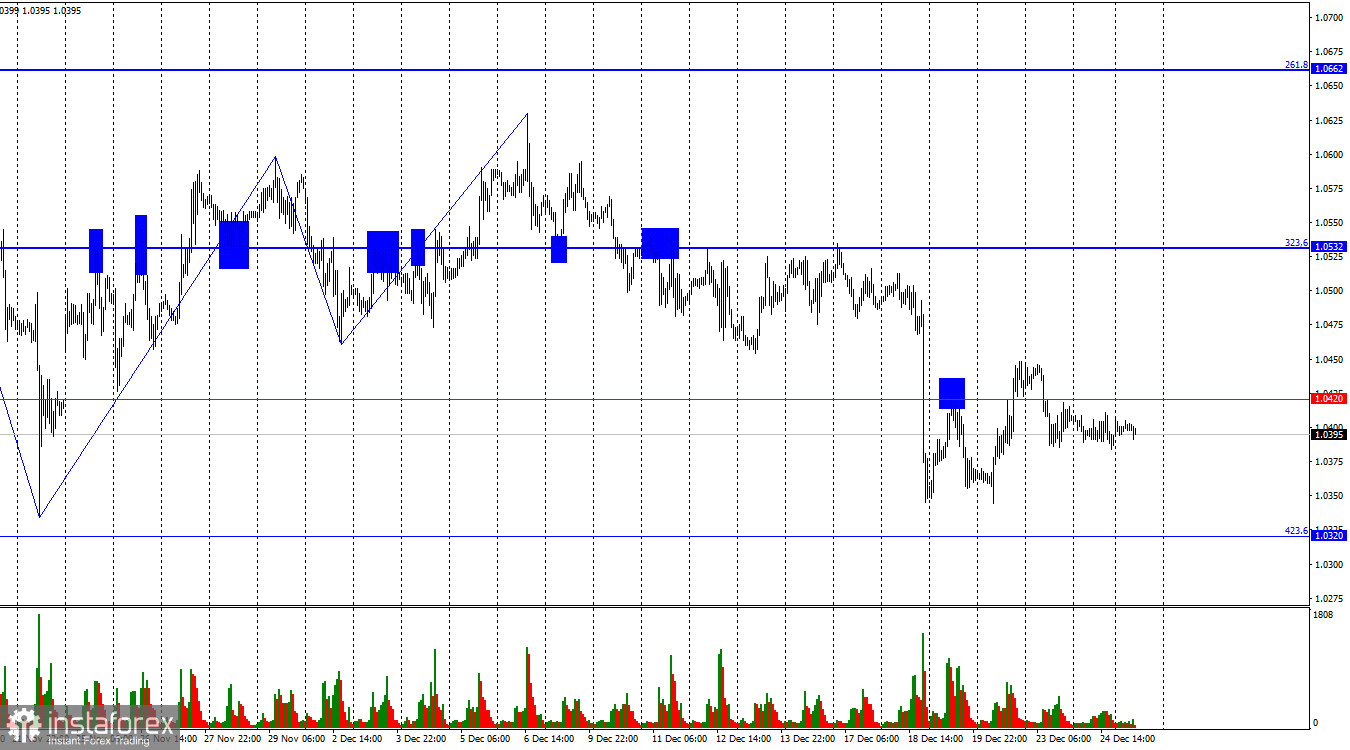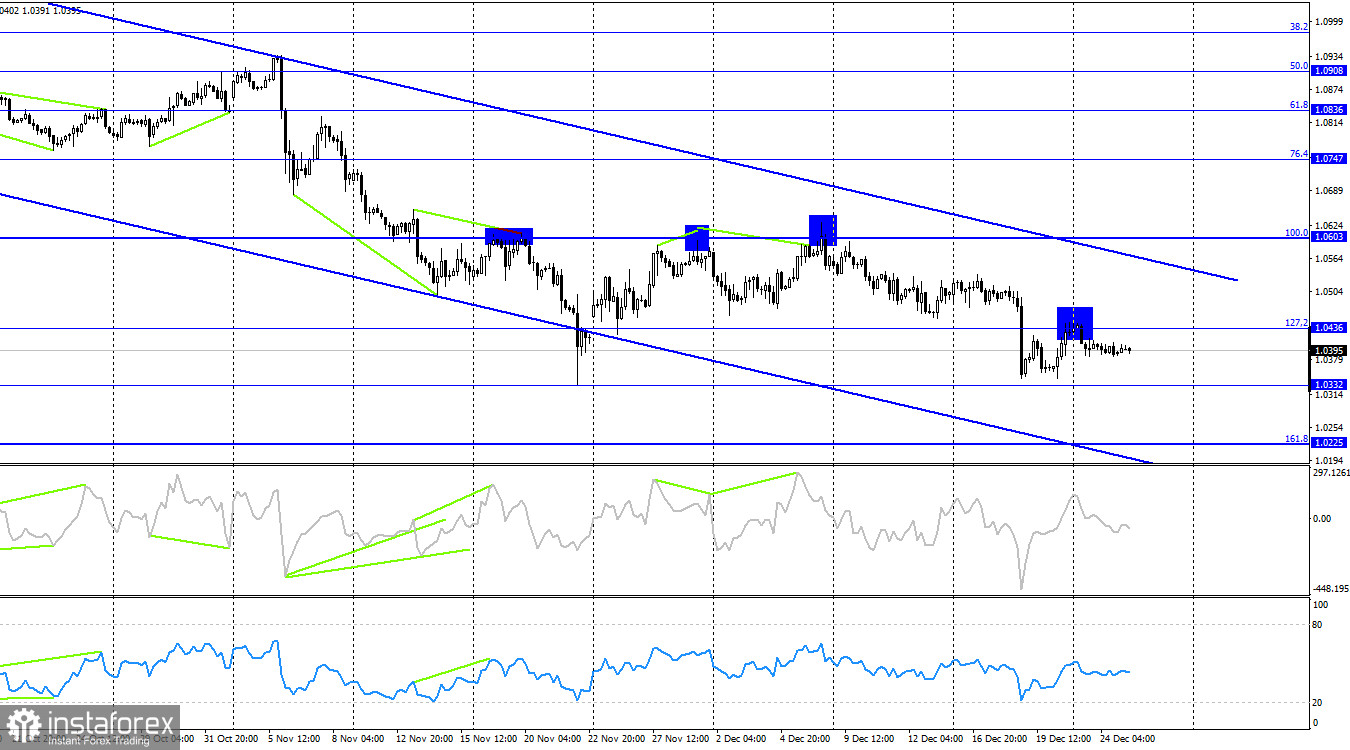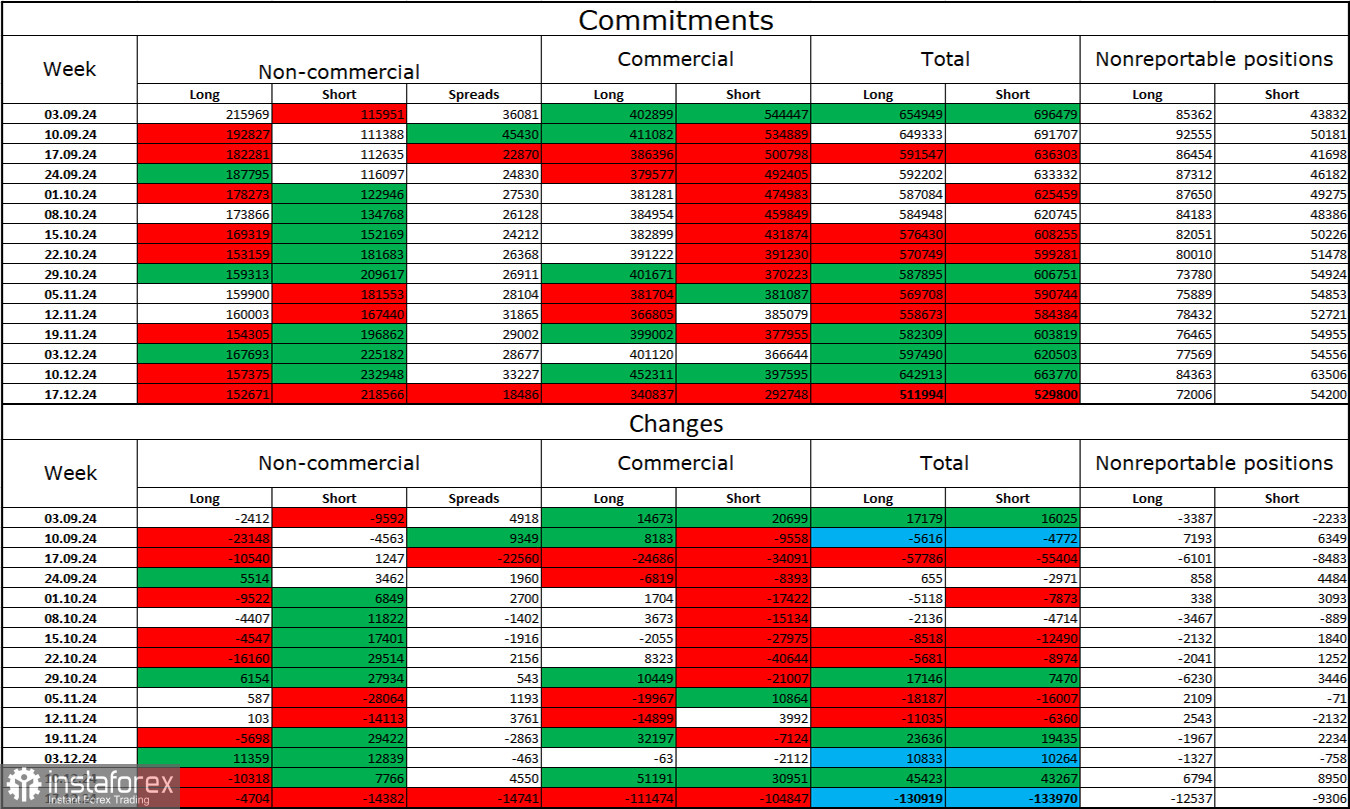On Tuesday, the EUR/USD pair traded horizontally, and the market remained closed on Wednesday. Currently, the quotes are holding below the 1.0420 level, keeping the potential for further declines toward the 423.6% Fibonacci retracement level at 1.0320. Predicting the timing of this decline is difficult, as there is limited trader interest in the market leading up to the New Year. The technical picture may shift multiple times before any significant movement begins.

The wave structure is straightforward. The last completed upward wave slightly broke the peak of the previous wave, while the most recent downward wave easily broke below the prior low. Thus, the formation of the bullish trend can be considered complete, albeit weak. A new bearish trend is now expected to dominate the pair's movement.
There was no impactful news on Wednesday or Thursday, which explains the inactivity of both bulls and bears. The market has entered a holiday mode with Christmas and New Year festivities, reducing the likelihood of substantial movements until the year's end. However, at some point, bulls or bears may attempt to push the pair in their favor, exploiting the opposing side's inactivity. Such movements are nearly impossible to predict. Traders are still likely targeting the 1.0320 level, but patience may be required.

On the 4-hour chart, the pair rebounded twice from the 100.0% Fibonacci retracement level at 1.0603, followed by another rebound at 1.0436. The downward trend continues toward the 1.0225 level (161.8% Fibonacci retracement). A breakout above 1.0436 could indicate potential recovery toward 1.0603. No significant divergences are observed in the indicators today. The downward trend channel confirms bearish dominance, with no immediate signals for strong euro recovery.
Commitments of Traders (COT) Report

In the last reporting week, speculators closed 4,704 long positions and 14,382 short positions. The sentiment among the "Non-commercial" group remains bearish and continues to strengthen, signaling further potential declines for the pair. The total number of long positions now stands at 152,000, while short positions have reached 218,000.
For 14 consecutive weeks, major players have been reducing their euro holdings, confirming a bearish trend. Although bulls occasionally dominate within certain weeks, this is an exception rather than the rule. The expectation of Federal Reserve rate cuts, a key factor behind the dollar's weakening, has already been priced in. Thus, while new drivers for a weaker dollar may emerge, the likelihood of a stronger U.S. currency remains higher. Technical analysis supports the continuation of the long-term bearish trend, suggesting a prolonged decline in the EUR/USD pair.
Economic Calendar for the U.S. and Eurozone
- U.S.: Initial Jobless Claims (13:30 UTC)
The economic calendar for December 26 features only one minor entry, which is unlikely to impact market sentiment significantly.
EUR/USD Forecast and Recommendations
- Selling the pair was viable after a rebound on the 4-hour chart from 1.0603, targeting 1.0420 and 1.0320. The first target has been reached, and the second is close to completion.
- Additional selling opportunities may arise after a rebound from 1.0620 on the 4-hour chart.
- Buying is not advisable at this time.
Fibonacci Levels
- Hourly Chart: Levels built between 1.1003 and 1.1214.
- 4-Hour Chart: Levels built between 1.0603 and 1.1214.





















